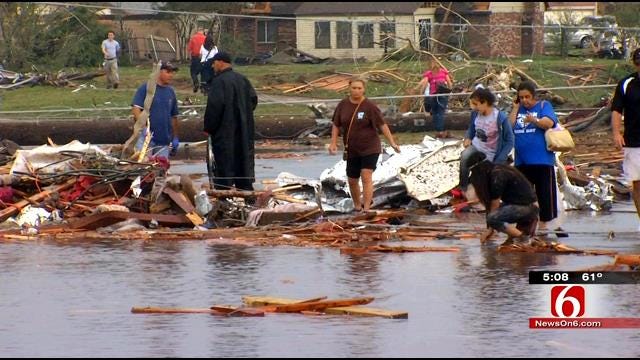Researcher Uses Past Oklahoma Tornado Data To Predict Future Patterns
Now retired after 25 years of doing data analysis for INCOG, Bob Pendergrass turns his research skills to Oklahoma twisters.<br />Monday, May 19th 2014, 5:59 pm
As we get closer to the one year anniversary of the deadly tornado outbreak, a research expert says a close look at tornado data in Oklahoma over the past 60 years can show areas likely to see more tornados in the future.
His research shows amazing patterns.
Now retired after 25 years of doing data analysis for the Indian Nation Council of Governments, Bob Pendergrass is a consultant. He teaches college students geographic information systems - or, in a very simple way of putting it, analyzing historic data to find patterns.
He's now applying those techniques to tornados.
"I've seen maps from the National Weather Service, showing tornado paths, and said, 'hey I can do something with that,'" said Bob Pendergrass, geographic researcher.
After the 2013 Moore tornado, Pendergrass stepped up his analysis of Oklahoma tornados. Looking at tornado data for every square mile of the state back to 1950, his study shows the probability of an area being hit by a twister any given year is 1 in 1,000.
But he says the calculations show it's much higher in certain areas.
"There's enough history to say these areas are going to be hit repeatedly," Pendergrass said.
The study shows the worst spots, a 1 in 100 probability, include paths from Newcastle to Moore to Harrah, and from Drumright to Skiatook. Those are level one areas, because the tornados, based on the past, are also likely to be EF-4 or EF-5s.
5/19/2014 Related Story: Remembrance Ceremony Scheduled Tuesday In Moore
"Level two is also 1 out of 100. But they don't have the tendency to have severe tornados," he said.
That's the rest of the Oklahoma City area, plus far northeastern Oklahoma like Ottawa County, where a tornado hit Quapaw a few weeks ago, and an area near Wewoka, Seminole, Okemah and Prague.
Pendergrass says history is a good indicator of the future, and the data could help leaders plan for future emergencies.
"The lack of a consistent public policy has annoyed me," said Bob Pendergrass, a data analyst and geographic researcher. "There are things that can be done to mitigate the damage.
"No, you can't control a tornado, you don't know when it's going to hit or where, but there are some things that can be done to mitigate the damage."
Pendergrass says that may mean requiring more tornado-resistant new construction, or allocating more resources for shelters in some areas instead of others.
"In terms of trying to allocate scarce public resources, you can focus it," he said.
Pendergrass is in the process of sending the report to lawmakers, emergency management directors, and the national weather service. He thinks the research could one day save lives.


Craig Day
Craig Day anchors the 5, 6 & 10 o’clock newscasts at News On 6. He’s an Emmy and national Edward R. Murrow award winner, whose work has also been recognized with awards by several other journalism groups, including the Oklahoma Society of Professional Journalism, Oklahoma Associated Press, and broadcasting associations in Louisiana and Texas, including reporter and story of the year when he worked in Shreveport, Louisiana.
More Like This
January 2nd, 2025
September 29th, 2024
Top Headlines
April 7th, 2025












